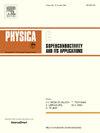Emergent Bose liquid: A generic quantum state of matter alternative to Fermi liquid
IF 1
3区 物理与天体物理
Q4 PHYSICS, APPLIED
Physica C-superconductivity and Its Applications
Pub Date : 2025-04-26
DOI:10.1016/j.physc.2025.1354723
引用次数: 0
Abstract
With continuous success in understanding and predicting experimental results in various materials, Fermi liquid theory has undoubtedly been demonstrated to be the cornerstone of modern condensed matter physics. However, the applicability of this theory was challenged by the observation non-Fermi-liquid behaviors in strongly correlated materials. Here, we introduce a different quantum state of matter, namely an emergent Bose liquid formed from tightly bound pairs of neighboring fermions. Many features of this emergent Bose liquid, including transport properties, superconducting phase and critical points, Bose metal phase, non-Fermi-liquid scattering rate, pseudogap, and superconducting gap, all demonstrate qualitatively different behavior from Fermi liquid. Surprisingly, from room temperature down to the low-temperature limit and from the low-density to the high-density regime, we find good semi-quantitative agreement with (and simple explanations for) many observations without introducing free parameters beyond the initial tight-binding coefficients. Producing such a broad agreement with experiments from a single emergent Bose liquid model strongly supports this alternative quantum state of matter for understanding the physics of strongly correlated materials.
涌现玻色液体:替代费米液体的物质的一般量子态
费米液体理论在理解和预测各种材料的实验结果方面不断取得成功,无疑已被证明是现代凝聚态物理的基石。然而,这一理论的适用性受到了强相关材料中非费米-液体行为观察的挑战。在这里,我们引入了一种不同的物质量子态,即由紧密结合的邻近费米子对形成的涌现玻色液体。这种涌现玻色液体的输运性质、超导相和临界点、玻色金属相、非费米液体散射率、赝隙和超导隙等许多特征都表现出与费米液体在性质上的不同。令人惊讶的是,从室温到低温极限,从低密度到高密度,我们发现在没有引入超出初始紧密结合系数的自由参数的情况下,与许多观测结果有很好的半定量一致(并对其进行简单解释)。从单一涌现玻色液体模型的实验中产生如此广泛的一致性,有力地支持了物质的这种替代量子态,以理解强相关材料的物理学。
本文章由计算机程序翻译,如有差异,请以英文原文为准。
求助全文
约1分钟内获得全文
求助全文
来源期刊
CiteScore
2.70
自引率
11.80%
发文量
102
审稿时长
66 days
期刊介绍:
Physica C (Superconductivity and its Applications) publishes peer-reviewed papers on novel developments in the field of superconductivity. Topics include discovery of new superconducting materials and elucidation of their mechanisms, physics of vortex matter, enhancement of critical properties of superconductors, identification of novel properties and processing methods that improve their performance and promote new routes to applications of superconductivity.
The main goal of the journal is to publish:
1. Papers that substantially increase the understanding of the fundamental aspects and mechanisms of superconductivity and vortex matter through theoretical and experimental methods.
2. Papers that report on novel physical properties and processing of materials that substantially enhance their critical performance.
3. Papers that promote new or improved routes to applications of superconductivity and/or superconducting materials, and proof-of-concept novel proto-type superconducting devices.
The editors of the journal will select papers that are well written and based on thorough research that provide truly novel insights.

 求助内容:
求助内容: 应助结果提醒方式:
应助结果提醒方式:


